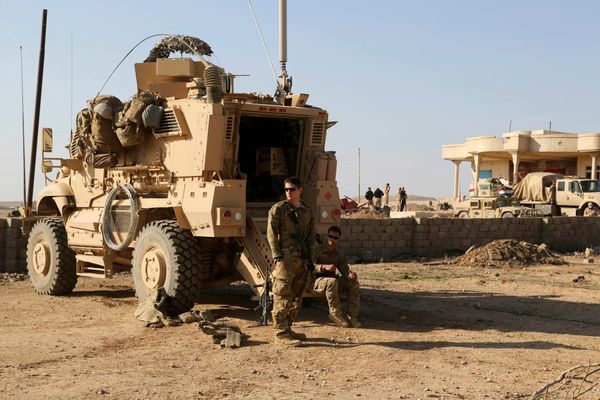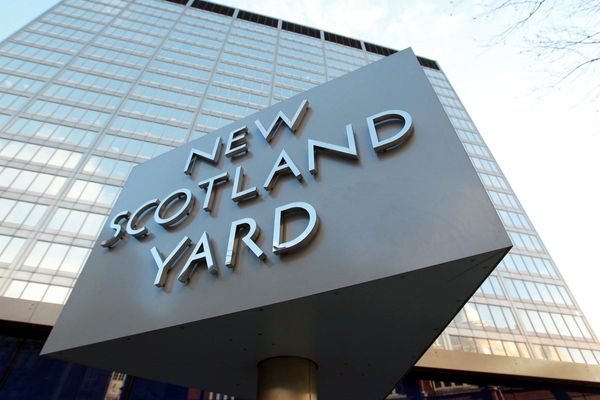
Beirut (AFP) - After Washington's latest attacks, AFP unpacks the deployments in a porous border region where the US and its Iran-backed rivals operate in close proximity.
The Euphrates river bisects the eastern province of Deir Ezzor where a patchwork of rival forces have taken up positions on opposing river banks.
After Washington's latest attacks, AFP unpacks the deployments in a porous border region where the US and its Iranian rivals operate in close proximity.
Where are US forces based?
The Kurdish-led Syrian Democratic Forces, the de facto army of the US-backed semi-autonomous Kurdish administration, oversees areas east of the Euphrates.
The SDF seized territory there following successive US-backed campaigns against the Islamic State group which it declared defeated in the east Syria hamlet of Baghouz in 2019.
US-led coalition forces which entered Syria in 2014 to fight IS have set up bases in the Al-Omar oilfield, the country's largest, as well as the Conoco gas field -- both of which lie on the eastern banks of the Euphrates.
US personnel are also stationed in the Kurdish-controlled Hassakeh region in Syria's northeast and the northern province of Raqa, also under Kurdish control.
In 2016, they set up a remote base in the strategic Al-Tanf region in southern Syria, near the borders with Jordan and Iraq.
How big is Iran's footprint?
Iran-backed paramilitaries have bolstered the fighting force of the Syrian regime of President Bashar al-Assad since the start of the 2011 war.
The border area is a key segment of the route that pro-Iran armed groups use to move fighters, weapons and even consumer goods between Iraq and Syria.It's one of their most prized locations.
Around 15,000 pro-Iran proxy fighters from Iraq, Afghanistan and Pakistan are deployed in Deir Ezzor, according to the Syrian Observatory for Human Rights war monitor.
Tehran denies deploying regular troops to Syria but says its elite Revolutionary Guard Corps has "military advisers" with pro-regime forces.
Kataeb Hezbollah, a pro-Iran group operating under the umbrella of Iraq's Hashed al-Shaabi network of militias, is one of the best-known.
Iraqi units in Syria also include the Imam Ali Brigades and Sayyed al-Shuhada Brigades.
Together with Kataeb Hezbollah, these forces are known to have especially close ties to Iran's Revolutionary Guards.
Iran's ally, the powerful Lebanese Shiite movement Hezbollah, has also deployed advisors and commanders in the region since it officially announced its military backing for Assad in 2013.
Shiite Afghan militiamen of the Fatimid Brigade and Pakistani fighters with the Zainabiyoun Brigade are also stationed in Deir Ezzor, according to the Britain-based Observatory.
The Fatimid Brigade is considered to be one of the largest pro-Iran groups in Syria, according to the war monitor, and along with the Zainabiyoun Brigade has been hit by US sanctions since 2019.
Thousands of Syrians are also in Iran's pay and have joined local militias in Deir Ezzor.
Occasional flareups?
The volatile region that is home to some of Syria's most significant oil fields and gas plants has been at the centre of flareups between Tehran and its American and Israeli rivals.
Israeli raids regularly target weapon shipments, arm depots and military outposts operated by Iran-backed groups in Syria's east.
In January last year, Israeli strikes on east Syria killed more than 50 Syrian regime forces and allied Iran-backed fighters.
Washington too has claimed raids there.
President Joe Biden on Tuesday ordered air strikes on infrastructure facilities used by Iran-backed groups in Deir Ezzor.
The Observatory said the strikes killed six fighters.
They came in direct response to an August 15 drone attack on a coalition outpost that did not cause any casualties.
Iran denied any link with the groups targeted.
On Wednesday, US attack helicopters struck several targets allegedly used by Iran-backed militants to fire rockets at bases housing US personnel, killing at least two militants, the US military's Central Command said.
It followed rocket attacks that hit bases housing US personnel in Al-Omar and Conoco, leaving three US servicemen with minor wounds.







